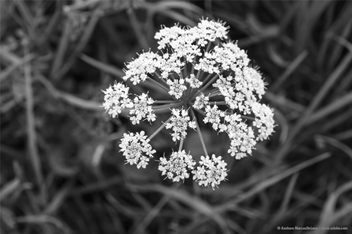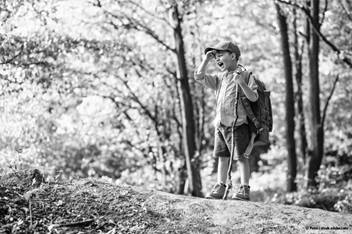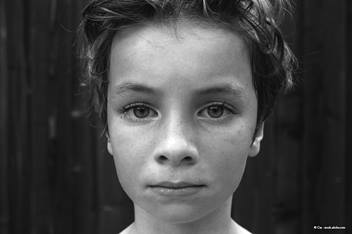Poison Ivy, Poison Oak and Poison Sumac: Treatment and Prevention
![]()

Poison ivy is a woody shrub that grows and spreads along the ground or climbs high in trees or on poles. It is found throughout the United States except on the West Coast. There are 3 leaflets on each leaf cluster of the plant. The 3-leaflet clusters grow about 3 to 4 inches apart on either side of the plant (Picture 1). The edges of the leaves may be smooth, toothed or rounded. The leaves are glossy green in early spring and summer, and by fall the leaves are a bright red color. The berries hang in clusters from the stem. In summer the berries are greenish-white. By fall, the berries turn to a tan color and later to a reddish color.
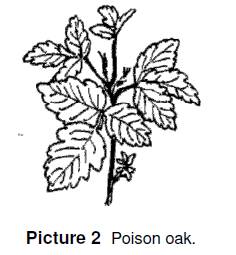
The poison ivy rash can be caused by an allergic reaction 1 to 3 days after contact with the sap of the plant. A child can get the rash by touching the plant, by coming into contact with the smoke from the burning plant and by touching the fur of animals that have touched the plant. Sometimes a live Christmas tree may have some of the poison ivy sap on its branches from plants growing on or near it. Only the sap of these plants causes the allergic reaction. You cannot get a rash by touching the fluid in the blisters. The fluid in the blisters does not spread the rash to other parts of the body.
Poison oak is a low-growing shrub. Stems usually grow upright. Leaflets occur in threes and have toothed edges (Picture 2).
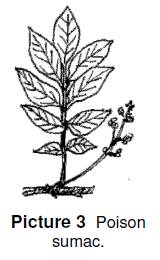
Poison sumac grows as a woody shrub or small tree, rather than a vine. The sumac leaves have 7 to 13 leaflets in pairs with a single leaflet at the end of the twig (Picture 3). Poison sumac grows mainly in swampy areas.
Poison oak and poison sumac grow in the eastern and southeastern part of the United States. The rash is caused by contact with the sap. Poison oak and poison sumac have the same symptoms as poison ivy and are treated in the same way.
Symptoms
Itching, burning, redness and small blisters appear on the skin within a few hours to 5 days after contact. A severe rash with swelling and large blisters may last for several days.
Immediate Treatment
- If your child has been playing on a wooded or weedy area or if you know that the child came in contact with the sap, give him or her a complete bath with soap and water within 15 to 20 minutes of contact.
- After you have bathed your child, wash your hands well.
- Wash your hands and arms with soap and water after decorating a live Christmas tree.
- Change and wash all clothes, including shoes, backpacks and purses after possible exposure to the sap. This will prevent the continued contact with the sap.
Treatment of the Rash
A soothing lotion such as calamine may be purchased from your local pharmacy without a prescription. When applied to the rash, the lotion helps prevent itching. Wash your hands after applying the lotion. Note: It is best not to use Caladryl® lotion for poison ivy because it is absorbed into the skin. You may use calamine lotion.
- Clean the skin with mild soap and water. Pat dry twice a day to help prevent infection.
- Cool compresses applied to the affected area help reduce itching. (To make a compress, soak a washcloth or small towel in cool water and wring out excess water. Fold the cloth into a small pad.)
- Trim the child's fingernails to keep him or her from scratching and help prevent infection if the blisters are scratched. You may need to cover the child’s hands at night.
- To help relieve the itching, you may give your child Benadryl®, a non-prescription medicine taken by mouth or Atarax® (by prescription only). Do not give your child Benadryl® until you ask the pharmacist or your doctor for the correct dosage.
- A severe rash may need to be treated by your child's doctor. Steroid medicine may be prescribed. Be sure to follow your doctor’s instructions for use.
Other Information
- There is no allergy shot recommended that will prevent the poison ivy rash.
- Teach your child how to identify the plants. When possible, avoid contact with them.
- An adult, who is not sensitive to these plants, should remove them from play areas. Wash hands and clothing well afterwards.
- It is best to kill the plants by spraying with a broadleaf weed killer and not by pulling or burning them. You can buy a broadleaf weed killer at your local plant nursery.
CAUTION: Any weed killer that is not used must be stored out of the reach of children.
When to Call the Poison Control Center
If your child has eaten any part of the plant, call the Poison Control Center at 1-800-222-1222 (TTY 614-228-2272) immediately for advice. If the child is not treated, he may have severe stomach upset.
When to Call the Doctor
Call your child’s doctor if:
- The rash covers a large part of your child's body or involves the eyes.
- The blisters appear to be infected (yellow pus, increased redness).
- Your child has a fever or enlarged lymph nodes.
- Your child has trouble sleeping because of itching.
- None of the treatments have helped your child, call your doctor.
HH-I-111 6/83, Revised 9/11 Copyright 1983-2011, Nationwide Children's Hospital

